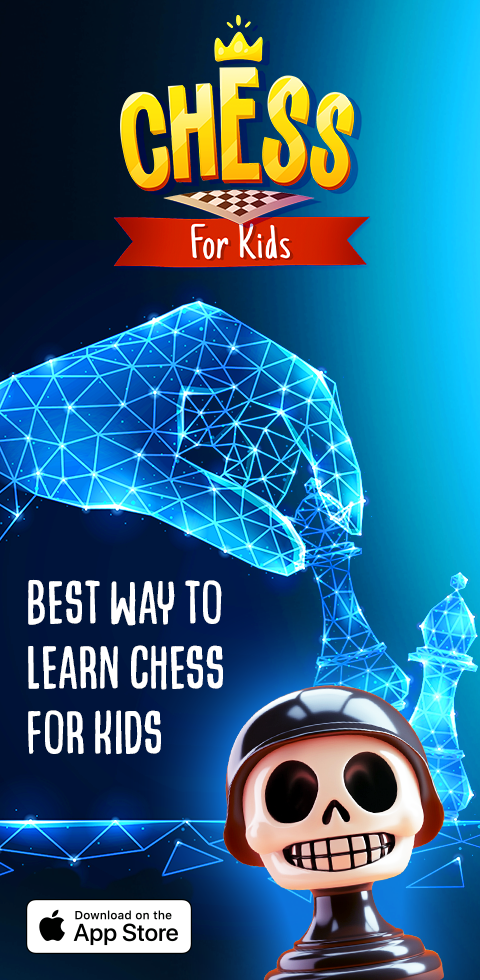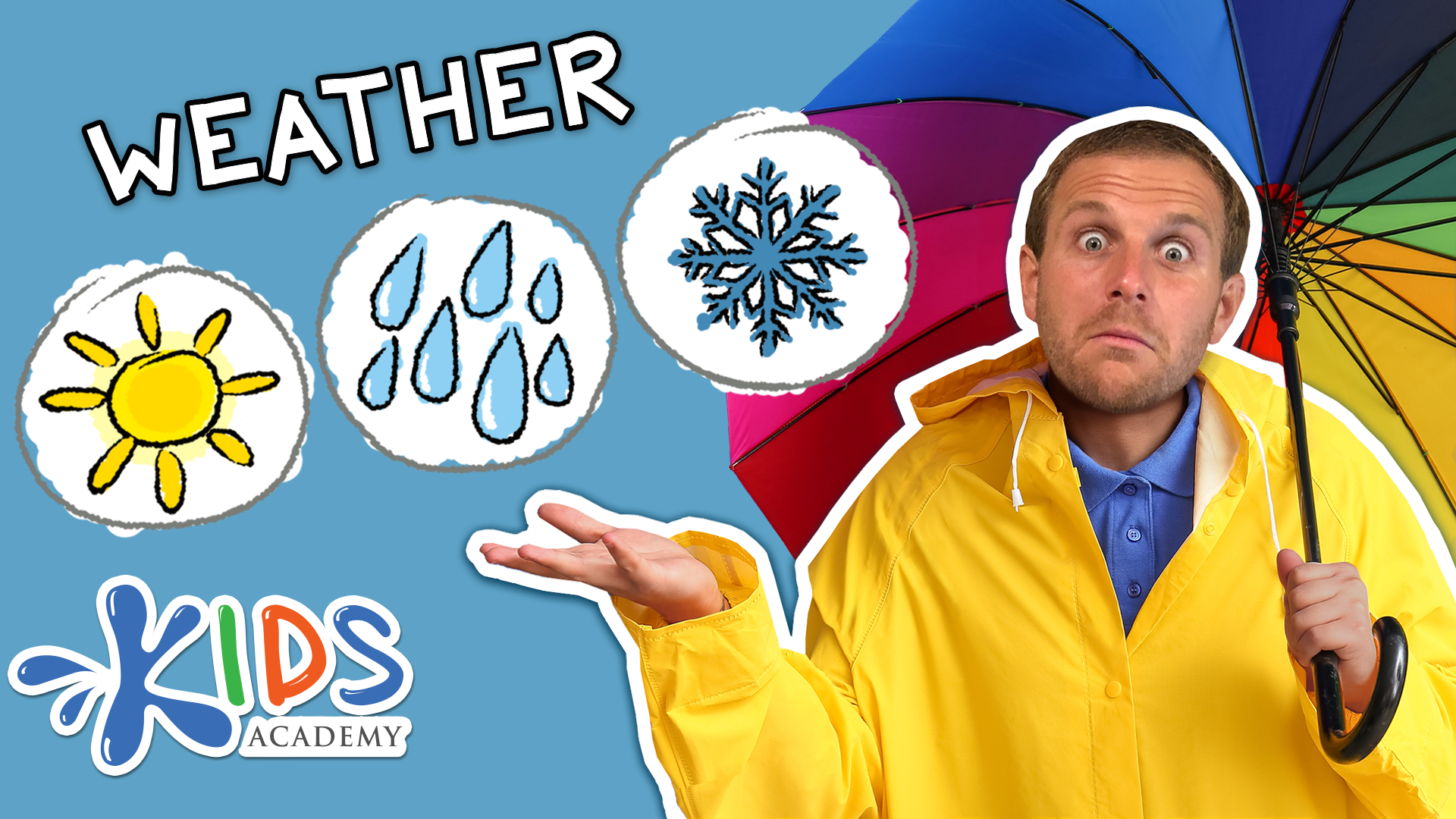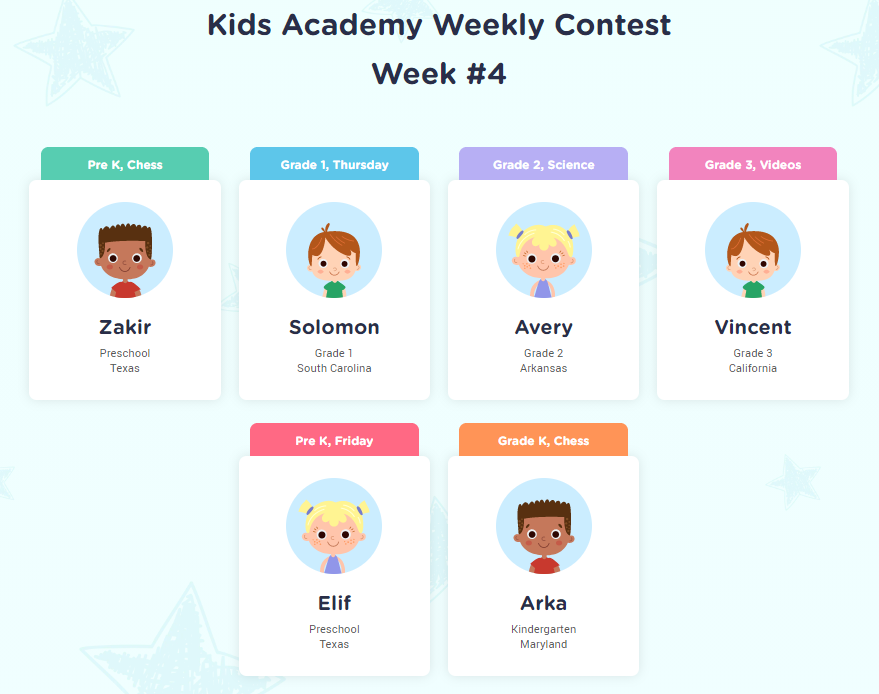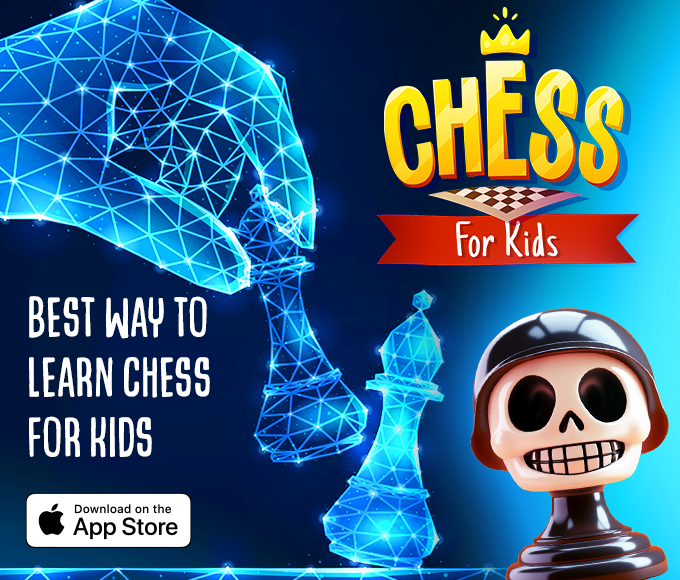Normal Poems Worksheets Activities With Answers for Ages 3-8
10 filtered results
-
From - To
Discover engaging poems worksheets and activities designed for children ages 3-8! Our resources feature a variety of normal poems that inspire creativity and learning. Each worksheet focuses on enhancing literacy skills, rhythm, and comprehension while making poetry fun and accessible for young learners. With answer keys included, educators and parents can easily evaluate progress and encourage participation. From themed exercises to interactive activities, these worksheets are ideal for reinforcing language concepts in a playful manner. Dive into the world of poetry with our specially crafted resources that foster a love for reading and self-expression in young children! Explore today!
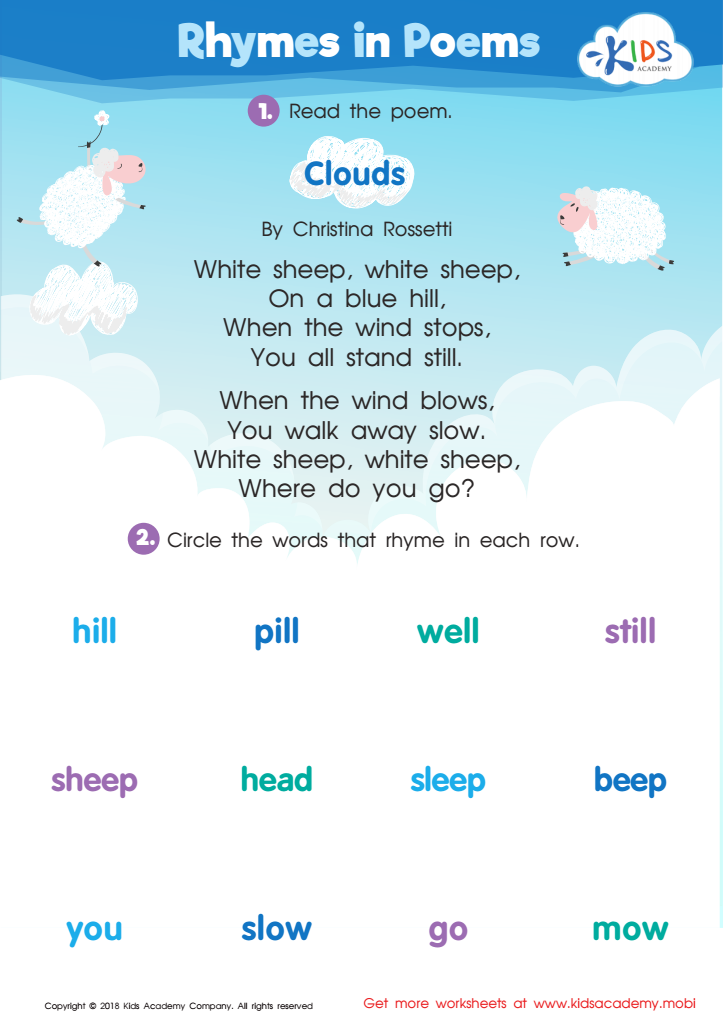

Rhymes in Poems Worksheet
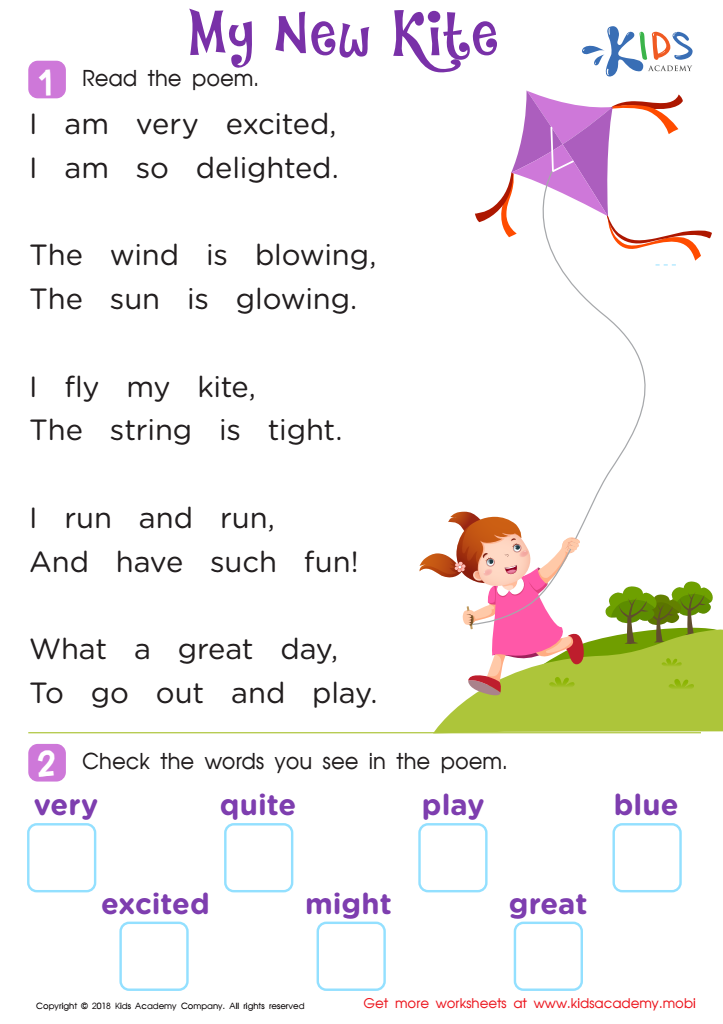

Poem: My New Kite Worksheet
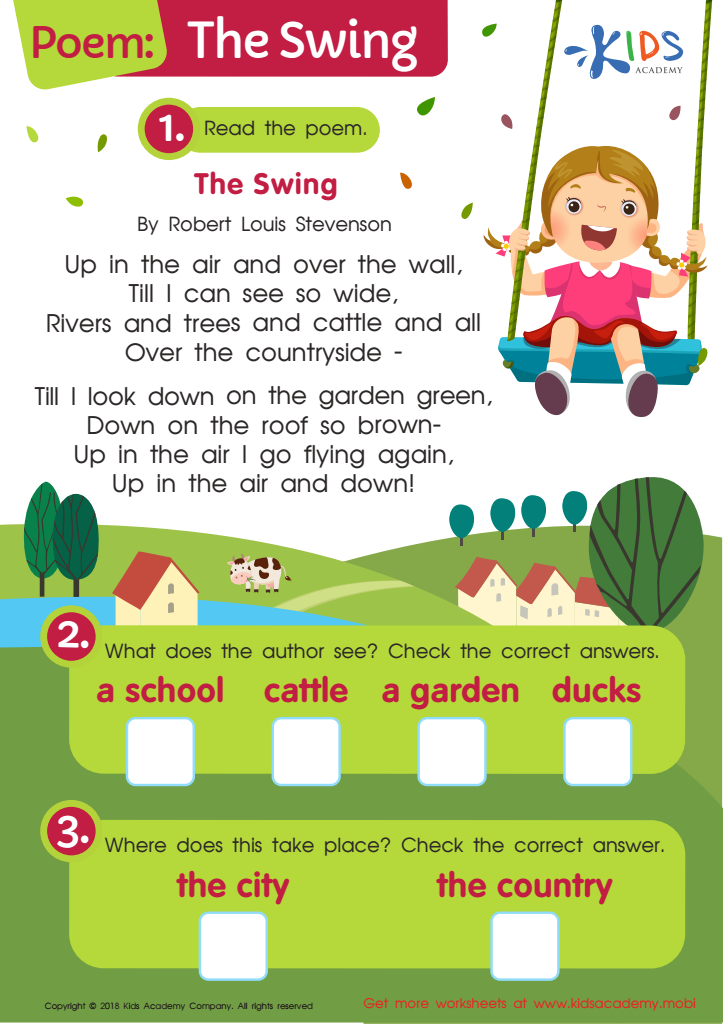

Poem: The Swing Worksheet
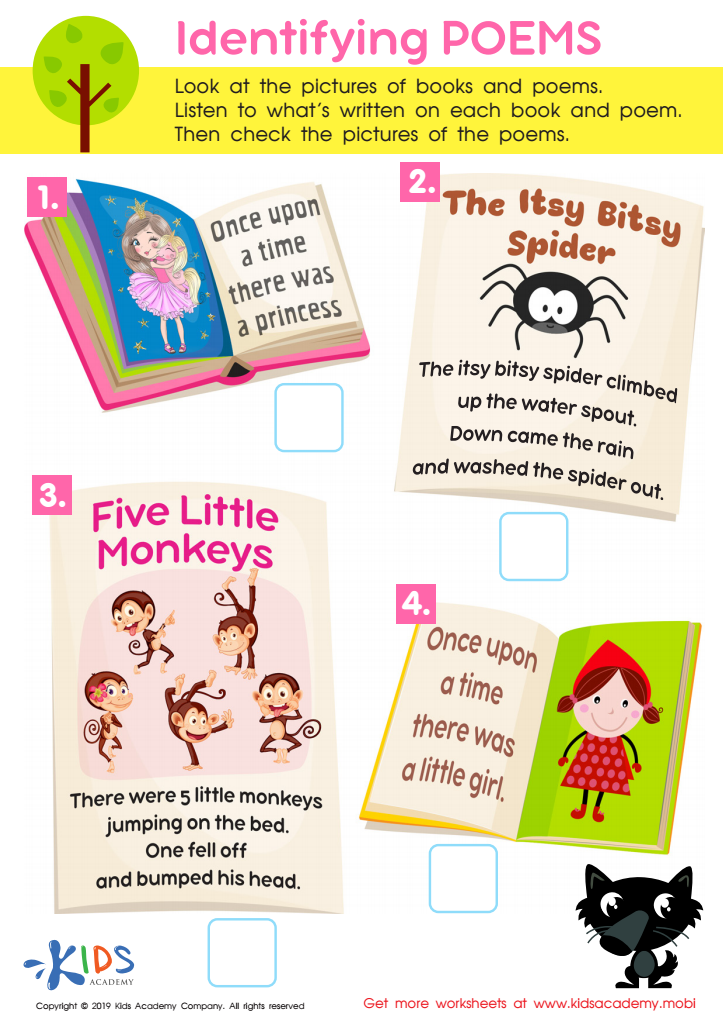

Identifying Poems Worksheet
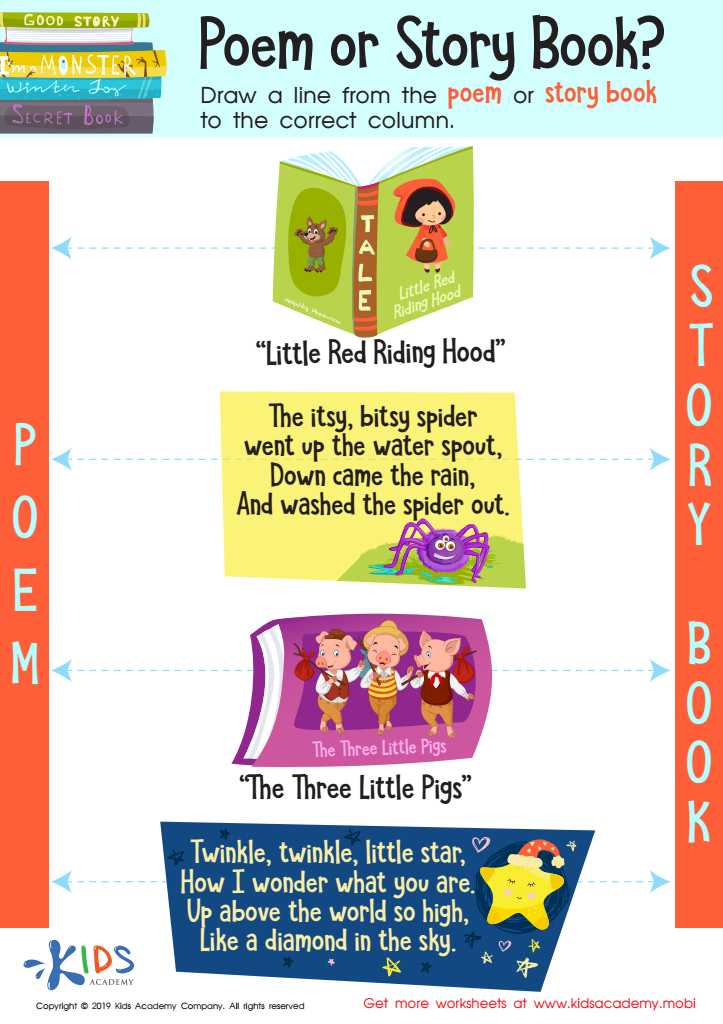

Poem or Story Book? Worksheet
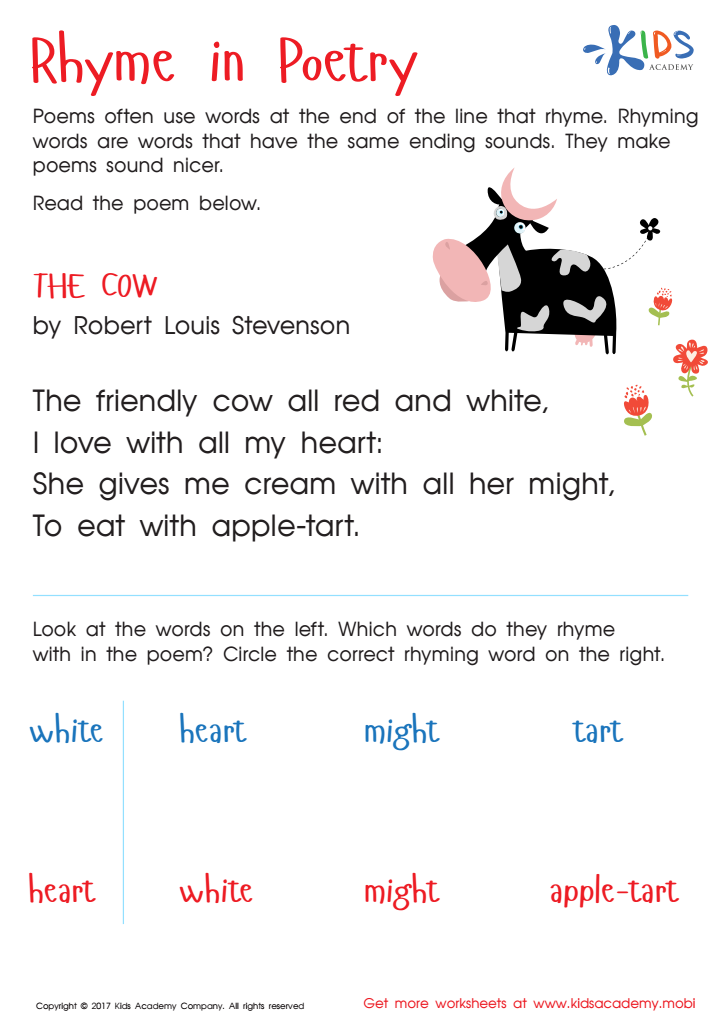

Rhyme In Poetry Worksheet
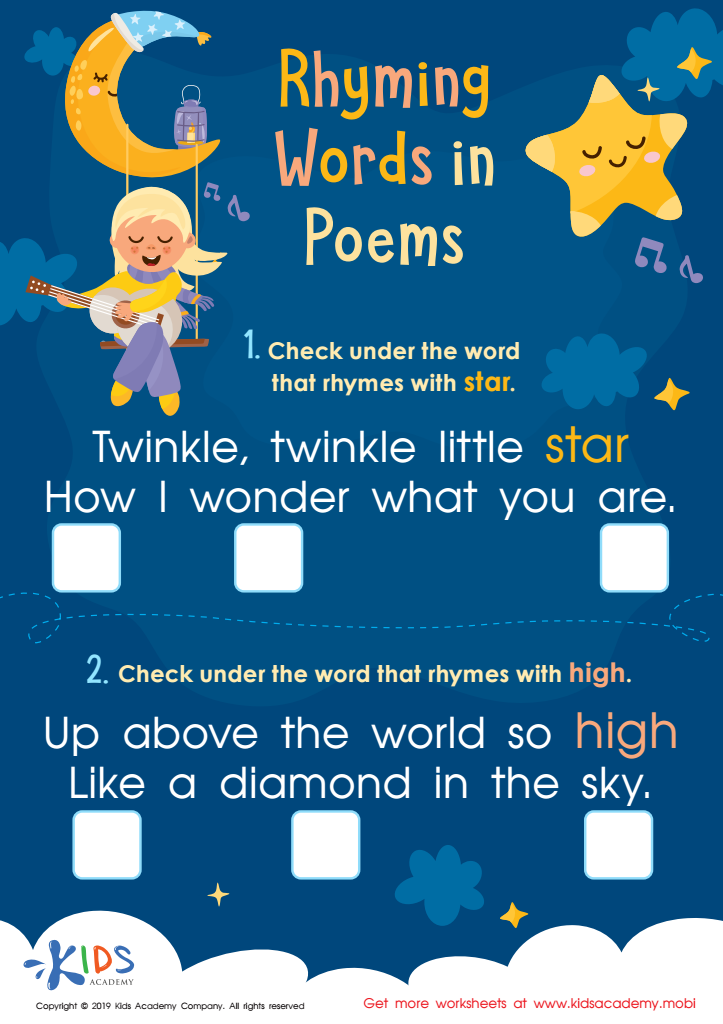

Rhyming Words in Poems Worksheet
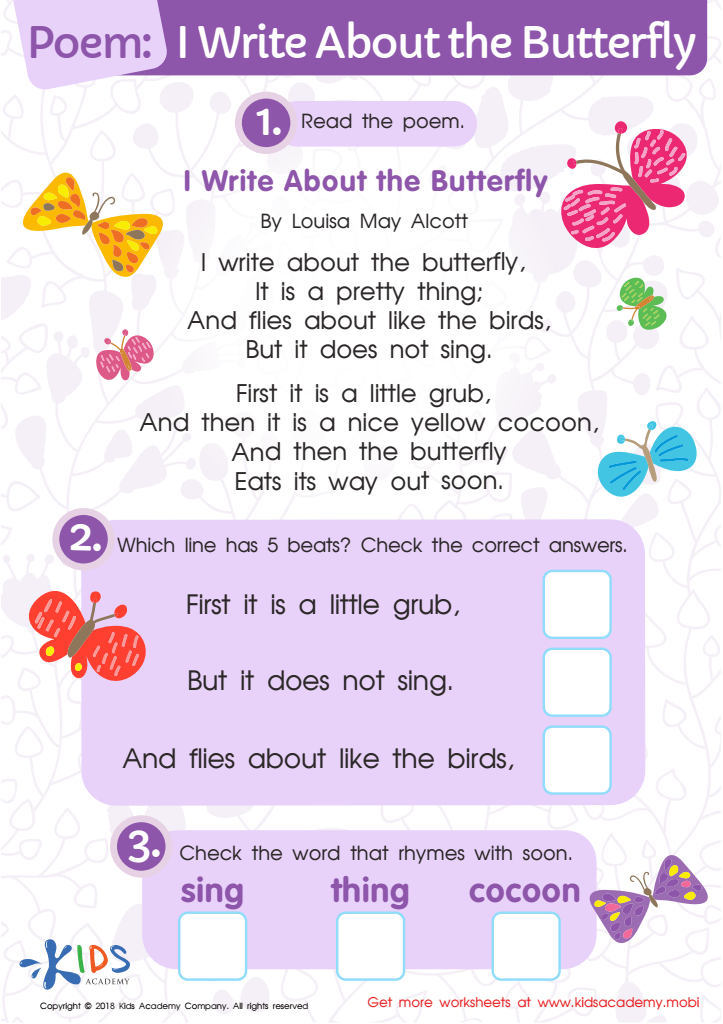

Poem: I Write About The Butterfly Worksheet
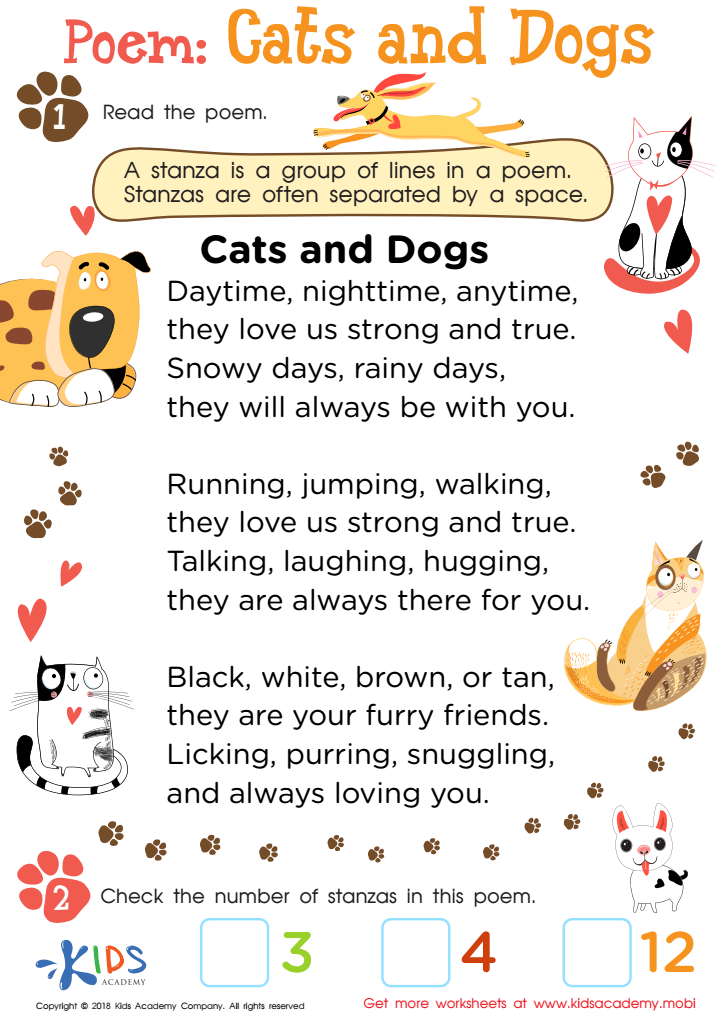

Poem: Cats and Dogs Worksheet
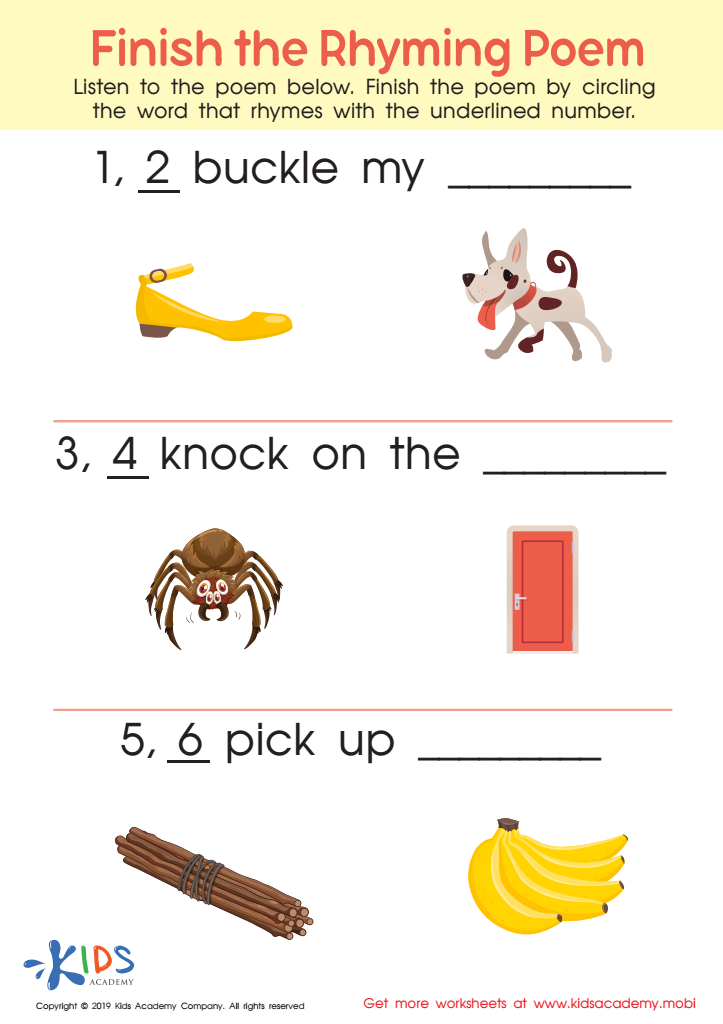

Finish Rhyming Poem Worksheet
Normal Poems Activities with Answers for Ages 3-8 are invaluable resources for parents and teachers because they foster early literacy and creativity in young children. Engaging with poems not only enhances language skills but also ignites imagination and emotional expression. These activities are designed to help kids explore rhythm, rhyme, and imagery, all essential components of poetry.
For parents, these structured yet fun activities promote quality bonding time while cultivating a love for reading. By reading and discussing poems together, parents can enhance their children’s vocabulary, comprehension, and critical thinking abilities. Teachers benefit as well because such activities can easily be incorporated into lesson plans, making learning dynamic and interactive in the classroom.
Moreover, these activities cater to various learning styles, allowing every child to engage at their own level. The answer keys provided simplify assessment and feedback, ensuring that both teachers and parents can effectively track progress. Ultimately, Normal Poems Activities bridge learning and enjoyment, empowering children to express themselves artistically, and laying a strong foundation for future literacy skills. Investing time in these activities nurtures not only academic growth but also emotional and social development in young learners.
 Assign to My Students
Assign to My Students

